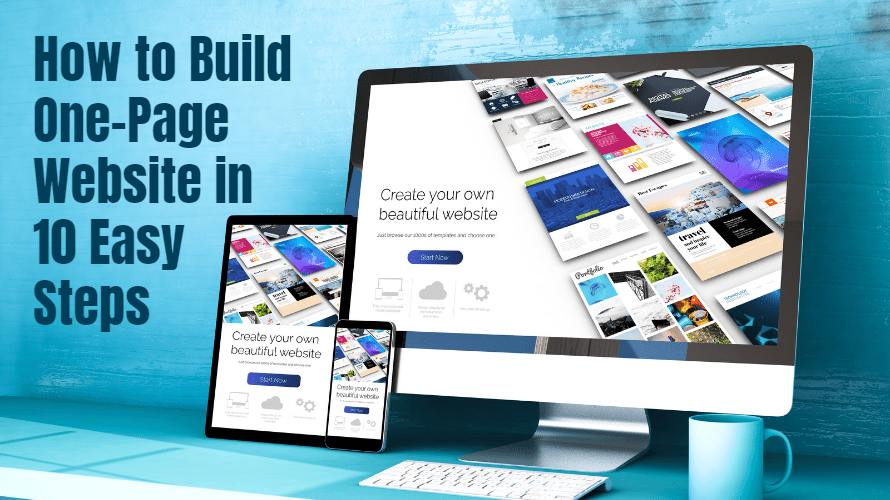Building an awesome one-page website can be a great way to showcase your business or personal brand in a sleek and effective way. One-page websites are becoming increasingly popular due to their simplicity and ease of use, but it takes some planning and strategy to make sure your one-page site stands out from the crowd.
Table of Contents
- Determine the purpose and target audience of your website
- Choose a clear and concise message
- Create a clean and modern design
- Use high-quality images and graphics
- Keep it simple and user-friendly
- Include a call to action
- Optimize your website for search engine
- Consider adding interactive elements
- Use responsive design
- Test and refine your website
- Final words
In this blog post, we shall discuss ten unique steps to building a one-page website. stay tuned!
1. Determine the Purpose and Target Audience of Your Website
Before you start designing your website, it’s important to determine the purpose and target audience of your site. Are you building a website for your business? Or are you creating a portfolio website to showcase your work? Knowing your target audience and the purpose of your website will help you determine what content you should include on your website.
2. Choose a Clear and Concise Message
Since a one-page website has limited space, it’s essential to choose a clear and concise message for your website. Your message should be focused on the purpose of your website and convey what you do or offer in a simple and effective way.
3. Create a Clean and Modern Design
The design of your one-page website is crucial to its success. You want your website to look modern, clean, and professional. Choose a color scheme that reflects your brand and make sure your website is easy to navigate. Keep in mind that you have limited space, so choose your design elements wisely.
4. Use High-Quality Images and Graphics
High-quality images and graphics can make a big difference in the look and feel of your one-page website. Choose images that reflect your brand and are relevant to the purpose of your website. Make sure your images are optimized for the web so that they load quickly and don’t slow down your website.
5. Keep It Simple and User-Friendly
One-page websites should be simple and easy to use. Make sure your website is easy to navigate and that your content is organized in a logical way. Use headings, subheadings, and bullet points to make your content easy to read. Avoid cluttering your website with too much text or too many images.
6. Include a Call-To-Action
A call-to-action (CTA) is a button or link that encourages users to take a specific action. Include a CTA on your one-page website to encourage users to take the next step. This could be anything from filling out a contact form to making a purchase.
7. Optimize Your Website for Search Engines
Optimizing your one-page website for search engines is essential if you want people to find your website. Use relevant keywords in your content and include meta descriptions and title tags. Make sure your website is mobile-friendly and loads quickly, as these are important factors in search engine rankings.
8. Consider Adding Interactive Elements
One-page websites don’t have to be static. You can add interactive elements to your website to make it more engaging and memorable. For example, you can include animations, sliders, or videos to showcase your content in a creative way. Just make sure that any interactive elements you add don’t slow down your website or make it difficult to navigate.
9. Use Responsive Design
With more and more people accessing websites from mobile devices, it’s important to use responsive design when building your one-page website. Responsive design ensures that your website looks good and functions well on all devices, including desktops, tablets, and smartphones. By using responsive design, you can provide a seamless user experience for all visitors to your website.
10. Test and Refine Your Website
Once you’ve built your one-page website, it’s important to test it thoroughly to make sure it works as intended. Test your website on different devices and browsers to ensure that it looks and functions correctly. You should also ask friends, family, or colleagues to test your website and provide feedback. Use this feedback to refine your website and make any necessary improvements.
Final Words
Building an awesome one-page website takes time and effort, but the result can be a powerful tool for promoting your brand or business. By following these tips and staying focused on your goals, you can create a one-page website that is both effective and memorable. Whether you’re building a portfolio website or promoting your business, a one-page website can be a great way to showcase your content and engage your target audience.
Click to read more Web Hosting Blogs.







Add comment